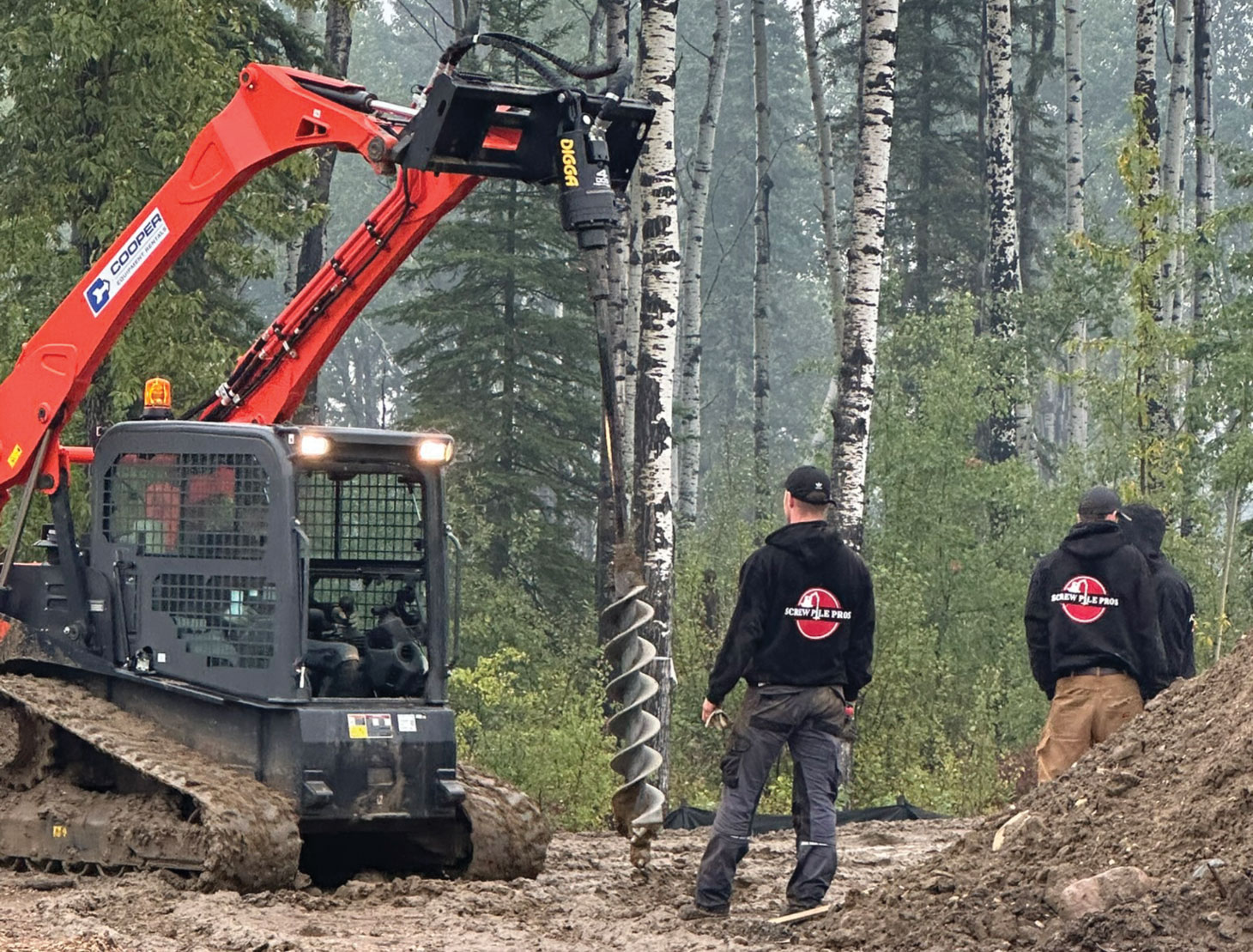
When Screw Pile Pros was invited to collaborate on the Cenovus’ Indigenous Housing Initiative (IHI) in Conklin, Alta., they knew this project was about more than just construction – it was an opportunity to make a lasting impact, says Ronda Bertram, senior project manager at Screw Pile Pros.
Cenovus, a Canadian-based integrated energy company headquartered in Calgary, Alta., announced in January 2020 that they were going to do a housing program for the First Nations and Métis communities that live and work where their sites are located.
The initiative aimed to provide sustainable, long-term housing for Indigenous communities in the area, presenting both a technical challenge and a chance to address a critical social need. “It was quite an amazing experience to work on,” said Bertram. “I sat with (the director of) Cenovus, Trenton Zacharias… and he said to me, ‘We did this because it was the right thing to do.’ And I was just so moved by that.
“Mat (Bergevin) and I are still in awe of what we were able to be a part of and accomplished in such a short period of time.”
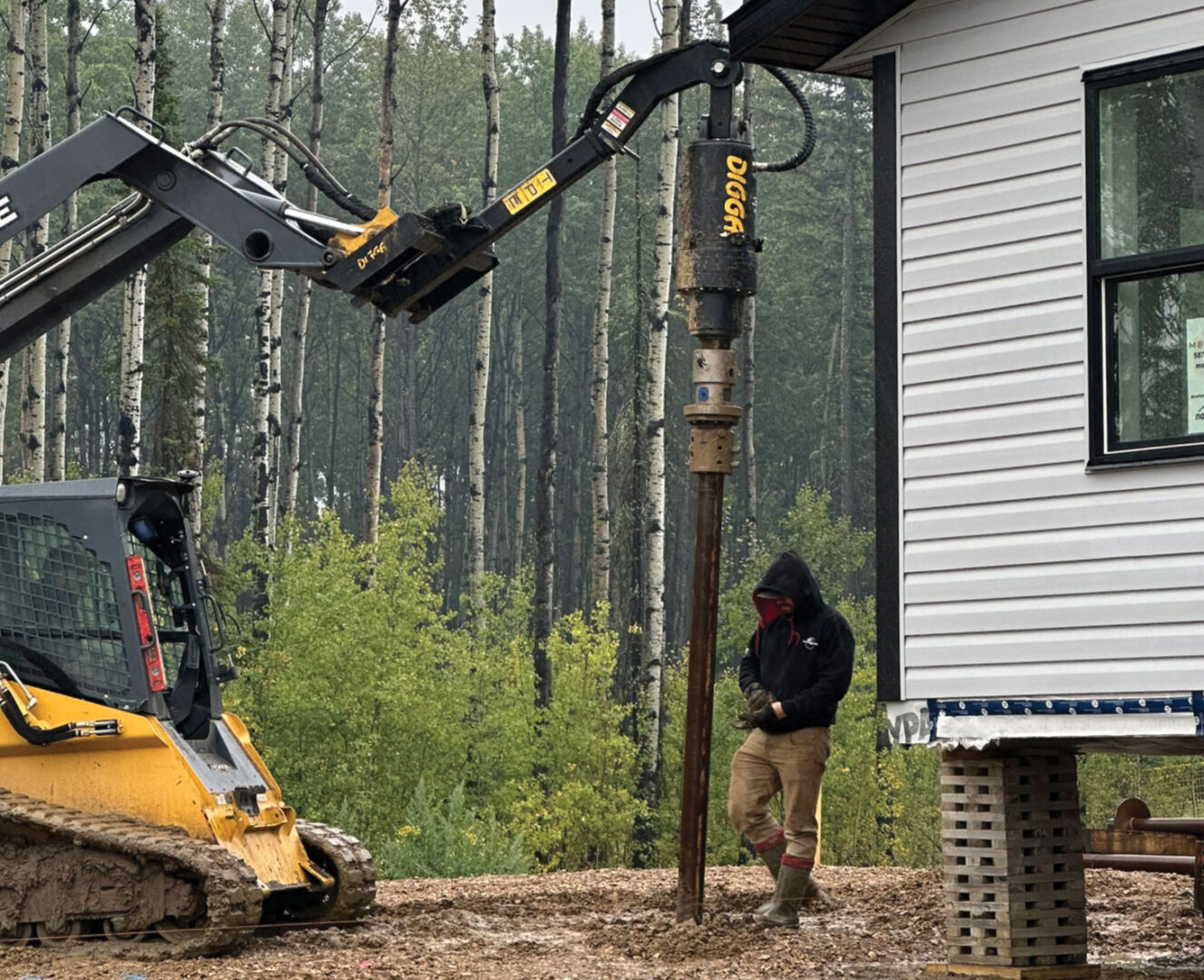
Addressing unique challenges
The Conklin area posed a variety of technical hurdles, including unpredictable soil conditions, a huge slope in the ground, lack of grading, time pressure for craning homes, scheduling pile installations while leaving lots open for delivery of the homes to be craned, managing and co-ordinating crews for pile installation and a welding team, and a very tight installation timeline that had to be accurate.
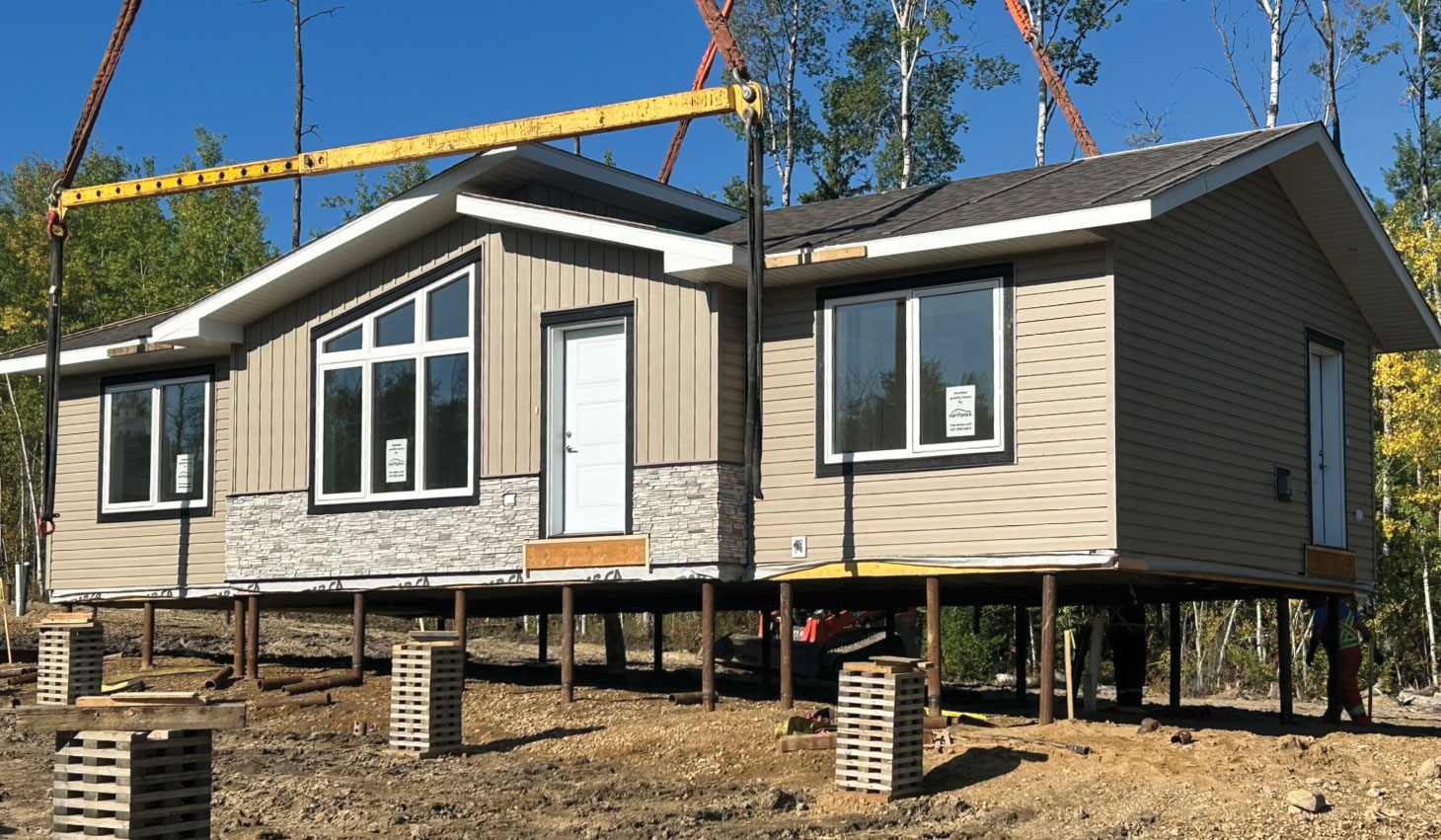
“Our engineer specified what we had to use for piles and for size and depth … and in some areas, there was something so hard in that ground that we couldn’t pass the piles. We ended up having to get a really expensive auger, try to drill through whatever that was that was in the ground, which did not show up in the geotechnical, and it baffled us all, because in some areas we had these piles sticking out of the ground, there was three feet in the ground, and seven feet in one area, five feet out of the ground, and we’re like, ‘What are we going to do?’” Bertram said.
To meet these challenges, Screw Pile Pros relied on their expertise in screw pile technology. They had to pull out all the piles that wouldn’t pass, auger each hole and re-install the piles. But while they fixed that issue, they realized that due to the ground being uneven and sloped, and having to have the homes levelled, this presented more challenges with the piles sticking so far out of the ground.
“So, from a co-ordination, a scheduling, a timing perspective, it was very challenging, but very rewarding because we accomplished it.”
Ronda Bertram, Screw Pile Pros
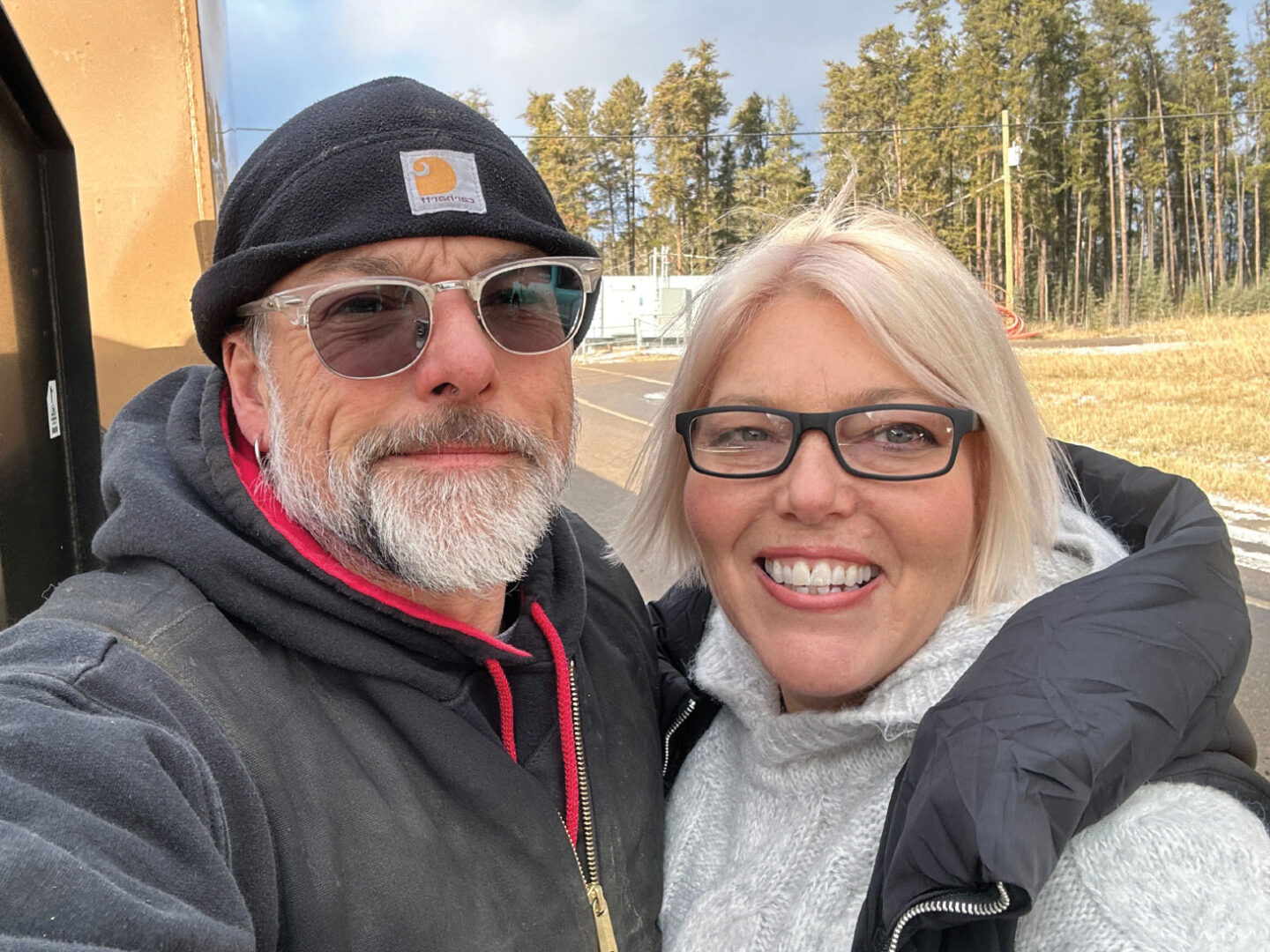
“It was two feet on one end and sometimes over four feet on the other end,” Bertram said. “It’s so deceiving and every day when we arrived on site to work, we would look at the houses that had been placed, … and we’d look at them and we’d think to ourselves, ‘Is that even? Is that straight?’
“It’s just such an optical illusion with that much of a slope in the land that you look at it and you think that it’s slanted, but it’s not; it’s perfectly levelled. It was really a challenging job with the ground, having to put hydrovacing around water and sewer lines that had already been installed, then having to do bracing on some of the piles. There wasn’t a lot of tolerance for the pile being out of alignment, especially because of the crane, and so that was challenging in itself to just make sure that everything was absolutely perfect and straight.”
Helical piles are a great solution when construction projects deal with difficult terrain or sloped ground. For the IHI project, the geotechnical study showed the ground was sandy and clay.
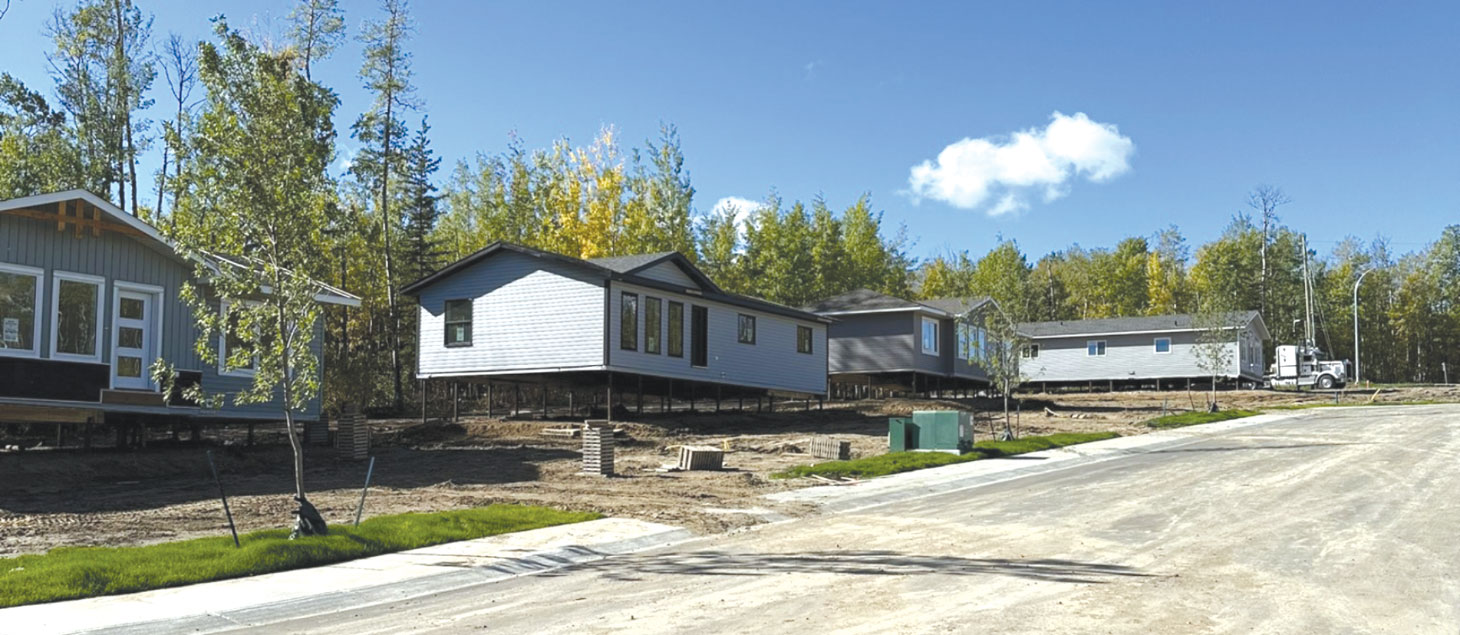
“They ended up putting piles in to alleviate grading costs, and then also because the ground wasn’t conducive for concrete basements and grade beams due to the slope of the land. I believe Cenovus’s plan was always to use piles, as in all six of these communities piles were mostly used for the foundation,” said Bertram.
Additionally, Screw Pile Pros had to be very rigid on the project schedule, which required efficient co-ordination between all parties. “You have to manage so many things to make sure that that lot is done for that crane to place that home, and you can’t just leave it if you run into a challenge and say, ‘Okay, well, we’ll deal with that later.’ Because there is no later,” Bertram said. “So, from a co-ordination, a scheduling, a timing perspective, it was very challenging, but very rewarding because we accomplished it.”
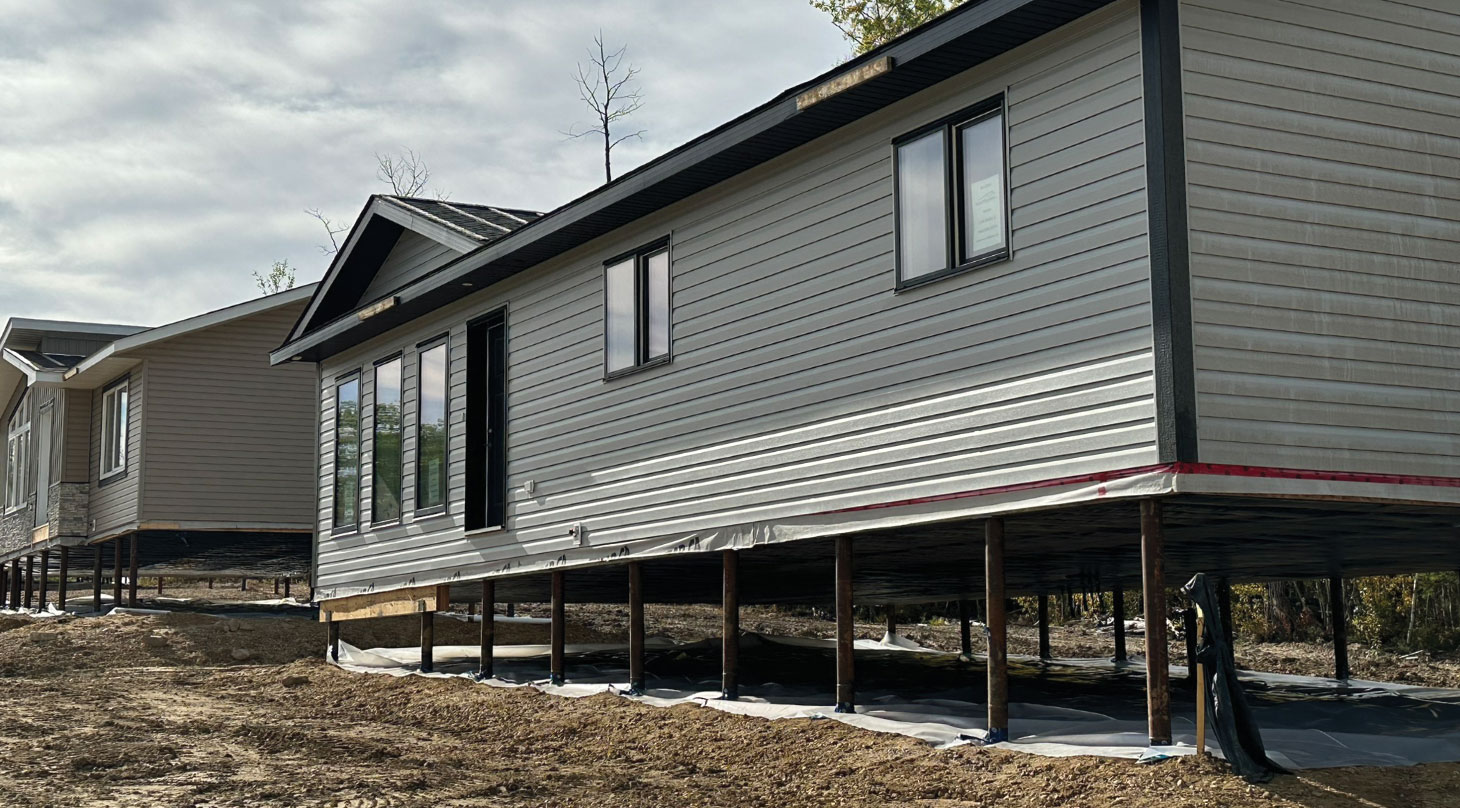
The results: A community transformed
The completion of the housing units marked a significant milestone for Conklin. IHI is Cenovus’s largest community investment. The program commits $50 million to build homes in the six First Nations and Métis communities close to their Foster Creek and Christina Lake oil sands operations. Not only did the project provide much-needed housing, but it also set a precedent for future development in similar communities.
“They’ve built a hundred and sixty one of those two hundred homes already,” said Bertram. “Some communities are building the houses themselves. Some are buying modulars, it just all depends, but the interesting thing (Zacharias) told me is the majority of them are going on piles.”
Lessons learned and looking ahead
For Screw Pile Pros, the Conklin project was as much a learning experience as it was a success story. Their involvement in the IHI project exemplifies how engineering ingenuity can drive meaningful change. By overcoming technical challenges and collaborating closely with stakeholders, the company delivered a successful project and contributed to a brighter future for the Conklin community.
“We want to be a beacon of life for this industry, for people and the installers who are in it. We want to share information and create standard practices to help grow it,” Bertram said. “We love what we do – we really just want to make a difference in this industry. I personally live by the phrase, ‘Be the change you wish to see in the world.’ That quote encompasses this project.”